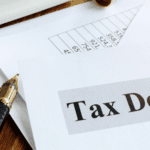Warning on SMSF asset valuations
Introduction
The ATO has issued a warning on SMSF asset valuations about sloppy valuation practices.
ATO data analysis has revealed that over 16,500 self managed superannuation funds (SMSFs) have reported assets as having the same value for three consecutive years. With many of these assets residential or commercial Australian property, you can forgive the ATO for being incredulous.
For SMSF trustees, consistently reporting asset values at the same level may trigger ATO scrutiny.
Asset values affect member balances, contributions, asset segregation for exempt pension income, work test exemption, and catch-up concessional contributions. Accurate valuations are crucial with the approaching Division 296 $3 million superannuation tax.
For in-house assets like related unit trusts, ensure valuations keep the fund within the 5% in-house asset limit. If in-house assets exceed 5%, sell assets to reduce the limit.
Valuing at market value
Each year, you must value the assets of your SMSF at ‘market value’ and provide evidence to your auditor. Market value broadly refers to the amount a willing buyer would reasonably pay to acquire the asset from a willing seller, assuming both parties are dealing at arm’s length and acting knowledgeably and prudently. It’s a common sense test that looks at the value you could reasonably expect to achieve for an asset.
If your SMSF holds collectible and personal use assets like artwork, jewelry, or motor vehicles, a qualified independent valuer must perform a valuation upon disposal. An independent valuation isn’t needed every year, but conducting one at least every three years is prudent. If you are not utilising an independent valuer, you will still need to make an active assessment based on market conditions. For example, if you hold artwork and the artist who created your investment artwork died, has this changed the value? Are the primary and secondary markets for the artwork transacting at a higher value? Leaving the asset’s value at its acquisition price questions the rationale for holding it in your SMSF. If the asset doesn’t add value to your retirement savings, consider whether it should remain in the fund when higher returns might be available elsewhere.
In most cases, the ATO require trustees to value an asset based on “objective and supportable data”. This means that you should document the asset being valued, a rational explanation for the valuation, and the method in which you arrived at it.

Valuing real property
Commercial and residential real estate doesn’t need an independent valuer. However, if there are significant changes to the property or market, or if the property is unique, getting a written independent valuation is advisable. This report should document the valuation method and list comparable properties.
If you are doing the valuation yourself, document the time period and characteristics contributing to the valuation. Note if it’s a 10-year-old brick four-bedroom property on 640m² in a specific suburb and any features like proximity to transport. Access credible sales data from recently sold similar properties in the same suburb or from a property data service. More than one source of data is recommended.
The estimates on a lot of online property sales sites are general in nature and not reliable for a valuation of a specific property. You can use the average price change for the suburb as supporting evidence for your valuation.
For commercial property, you must support the valuation with net income yields. If tenants are related parties, such as your business leasing a commercial property owned by your SMSF, provide evidence that the rent is comparable to market rates and keeps pace with the market.

Valuing unlisted companies and unlisted trust investments
Valuing unlisted companies and unlisted investments can be difficult. The financials alone are not enough. If your SMSF invested in an unlisted company or unit trust shares, trustees likely made the initial acquisition decision based on the asset’s value, growth potential, and income generation. Thus, if you assessed the market value when investing, it should be straightforward to value the asset annually.
The challenge for many investors is that in unlisted companies or trusts, the initial investment typically matches the cash needs of the activity being undertaken.
Generally, the starting point is the value of the assets in the entity and/or the consideration paid for the shares/units. For widely held shares or units, this is the entry and exit price.
Where property is the only asset, then the valuation principles for valuing real property are likely to apply.
Where there is no reliable data or market
We’ve encountered scenarios where SMSF assets have no equal or market. The true value will only be known when the asset is realized. These unusual items default to either a professional valuation or a viable market assessment. This might be a derivative of the purchase price or data from a related market.
Valuations and the impending Division 296 tax on super earnings
Asset values are crucial for those with super balances near or above the $3 million threshold due to the impending Division 296 tax on fund earnings. The tax will measure asset values and tax growth above this threshold. Accurate valuations ensure the fund doesn’t pay unnecessary tax and reduce the risk of anomalies inflating tax payable.





